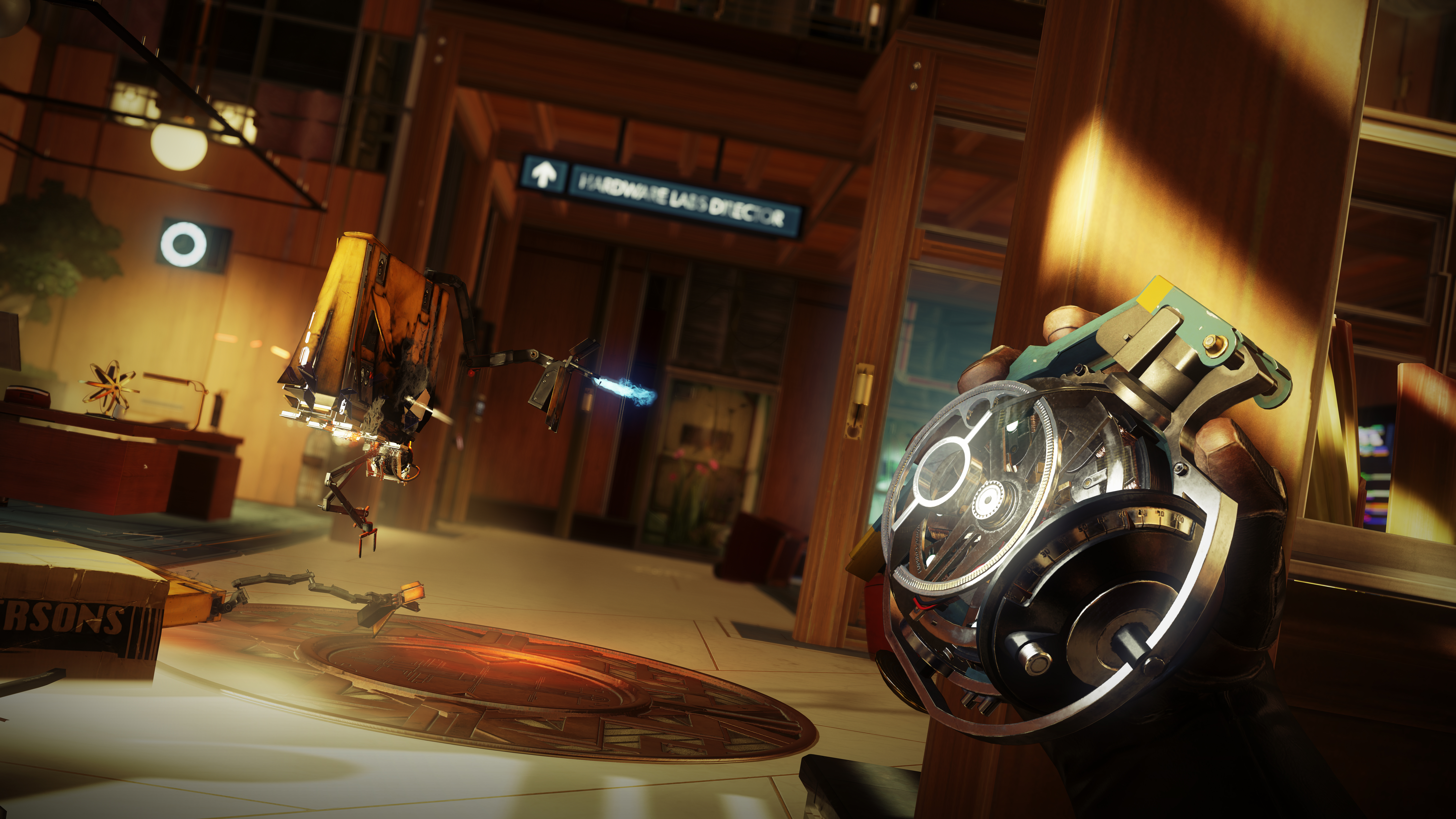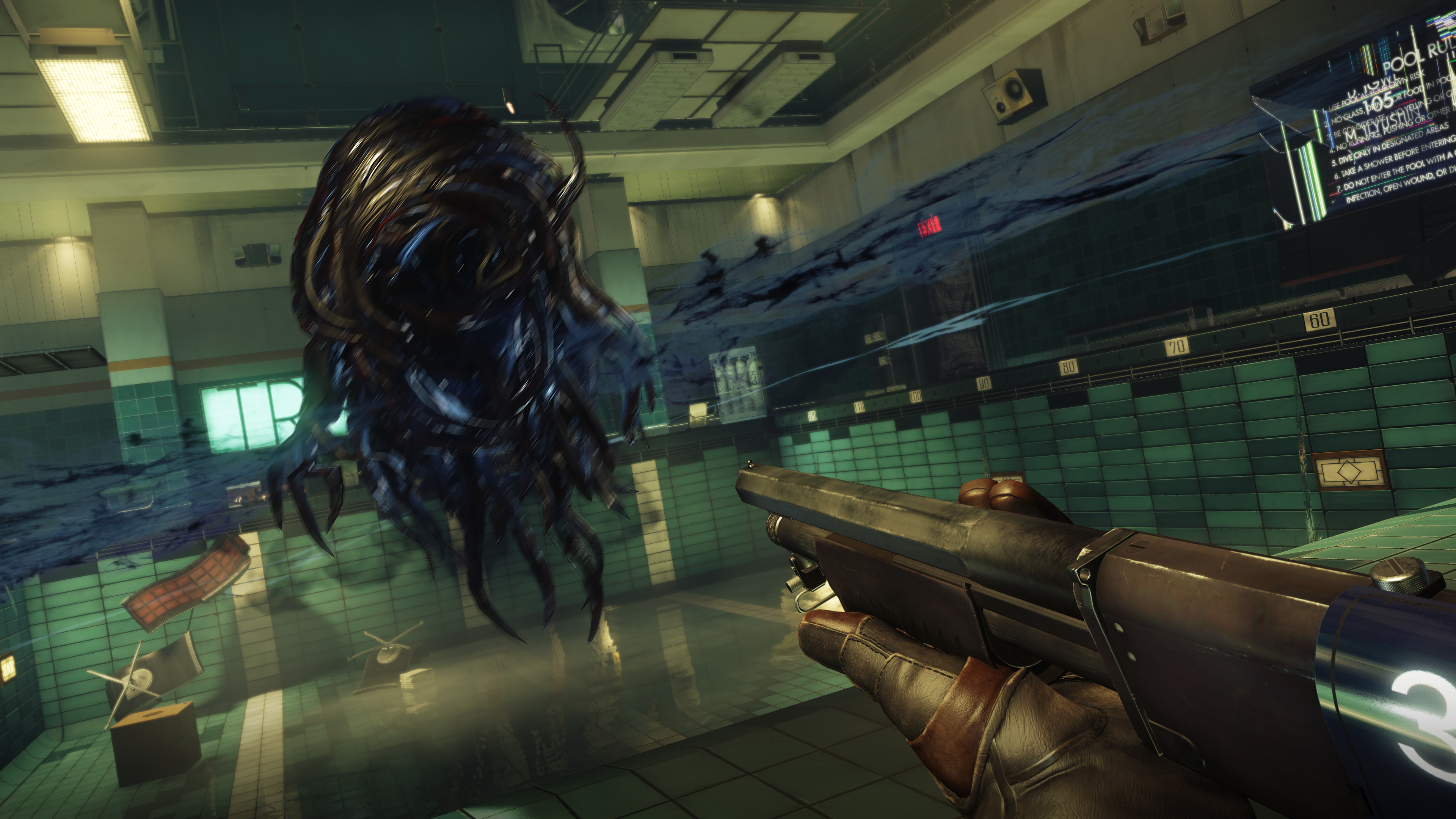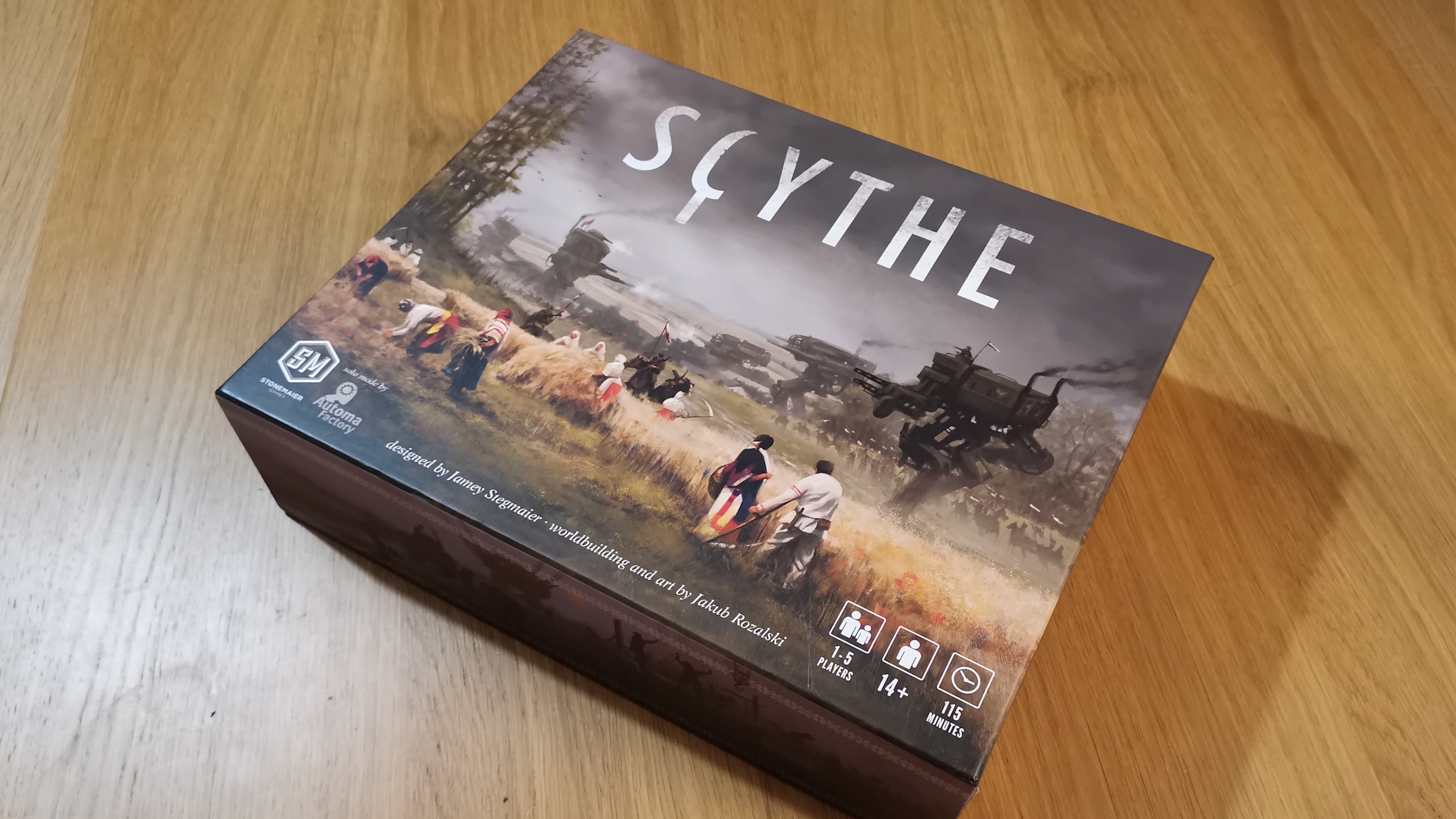Prey is the evolution of Dishonored, and the sequel BioShock always deserved (but never got)

BioShock never realised its full potential. It couldn’t, not even with two, entirely different sequels. The reason, ironically, is that BioShock nailed it the first time. It’s one of those rare games that delivered everything it could be – contemporarily at least - in an utterly complete form, in terms of both game design and artistic intent, on its first iteration. When a piece of work does that, the conversation is immediately over. There’s nowhere for it to go. Not for a while, at least.
The time for revisiting BioShock – or at least its ideals – has come, it turns out, nine years later. And it has come via a game called Prey, made not by ‘Shock master Ken Levine, but by the Austin wing of Dishonored studio Arkane. Which makes a lot of sense, when you think about it. After evolving the systemic stealth lineage of Thief better than Thief’s own reboot eventually would, with Dishonored and its sequel, it’s only logical that the simulation-minded studio would look to refertilise the ‘Shock family tree as its follow up.
All the structural tenets are clear from the off. An enclosed yet freely explorable installation, isolated but non-linear. A protagonist in the midst of a nightmarish mystery, who must decipher and survive in tandem if they are to have any hope of making it out alive. The ostensible aesthetic of an FPS, sitting snugly as a pie-lid over a deeper, player-driven, systemic RPG experience. But, with nearly a decade of distance from Irrational’s undersea jaunt, Arkane has managed to identify, distill, and most importantly amplify its essence to a fresh new, entirely modern level.
Because it seems that Prey is being designed with the same kind of experimental freedom with which its developers hope it will be played. A core philosophy of Arkane’s design process – which I see posted on the studio’s walls when I visit, alongside other important video game golden rules such as “Fuck ladders” – is “Say yes to the player”. If the player can imagine a possible new use for a creative combination of Prey’s multitude of gear, gadgets, and telekinetic, alien powers, then Arkane wants the game’s dynamic, unscripted systems to respond with a big, emergent affirmative. Even if that breaks the current game design. ‘Support, don’t fix’ is the philosophy at hand, unforeseen complications and opportunities swiftly tuned up into brand new game mechanics and puzzles if they’re fun enough. It’s fitting that a game tinged with Cronenbergian sci-fi horror should adopt The Fly’s mantra that apparent afflictions can actually be empowering with a bit of perspective.
Prey currently looks to deliver one of the most unsettling and detailed worlds we’ve seen in a while. The product of a near-future alternate history in which Kennedy’s non-assassination led to an early explosion in the pace of the space race, the Talos One space station is an intoxicating nightmare of a place, its glossy, neo-deco surface merely the fragile skin grafted over decades of layered, industrial iteration. Talos One was originally built as a lunar-orbiting US-Russian co-production, but has long since succumbed to the freefall into shadowy, private research. Your journey through Prey will take you through a physical evocation of the station’s entire history, from the shiny outer facade to the ugly darkness below, and all the places where the two clash and claw at each other with furious abandon.

But the physical structure of Talos One is also an explorable metaphor for the moment-to-moment freedom Arkane is infusing within it. While the main story – and its multifarious, spiralling side-quests – will guide you along the ‘right’ path, in truth there is no right or wrong in Prey. There’s just what you can survive, driven by whatever creative solutions you can craft to fuel that survival. If you can find a way to reach an area you’re not supposed to be in – either by combining your abilities in the cause of experimental traversal, or by taking a space-walk outside the station and popping back in elsewhere – Prey will allow you to explore for as long as you can stay alive, the only gating system being tougher enemies and environmental puzzles that will perhaps favour, but probably not demand, certain abilities.
The reason Arkane is taking such a freeform, all-accepting approach to player movement and progress is given the eclectic, diverse, and frankly ridiculous nature of the systemic toys the studio is playing with, it pretty much has to. Any one would be the stand-out trick in a lesser game, but in Prey, each showboating, alien skill is just part of a pulsating ecosystem of immense potential.
Weekly digests, tales from the communities you love, and more
For example, if you’ve watched Prey’s demo from The Game Awards, or were lucky enough to be at Quakecon this year, you’ll have seen Mimic, which affords protagonist Morgan the ability to turn into almost any free-standing object in the game. A handy stealth trick, obviously, but factor in that by doing so you’ll also take on the properties of said object, and maintain the ability to move, and you suddenly have the facility to manipulate and repurpose the fabric of the world around you to an intimately detailed degree.

Turn into a coffee cup, if you like, to hide from a quietly stalking Poltergeist alien, baiting it into revealing itself before popping up to nail the invisible, teleporting bugger with a surprise attack of your own. Of you might prefer to Mimic a small metal ball in order to roll through a tiny gap in an otherwise impassable pile of detritus blocking a corridor, or combine that shrunken, spherical state with a kinetic charge – you’ll maintain many of Morgan’s human-shaped abilities when morphed – in order to boost your significantly lighter, more aerodynamic self through the air.
Or there’s the anecdote I heard where one of Arkane’s staff turned into a punctured, exploding barrel in a zero-gravity environment, using the ensuing flame-jet to rattle around the area doing damage to the various floating enemies, before exploding to finish the job. And then reverted to undamaged, human form, and carried on.
Bear in mind that this is just one ability I’m talking about here, and Prey has a great many. You can drop a Lift Field, effectively an inverse gravity well, to launch yourself, important objects, or even enemies into the air. The aforementioned Kinetic Blast will boost nearby objects in any direction you want, depending on where you place it. Remote Manipulation and Leverage will extend your reach and allow you to lift and throw heavy objects, respectively. These are just the six I see in my most recent demo, yet they’re already leading to some ludicrously powerful interactions. Like when lead systems designer Seth Shain details the facility to use a Lift Field to smack a wraithlike enemy grunt into the ceiling and then use the GLOO Gun to stick it there, before dropping a Recycler Charge grenade – which sucks in any nearby matter and converts it into crafting materials – underneath it for some impromptu ghost busting action.

Sorry, I hadn’t mentioned the GLOO Gun, had I? I’m becoming increasingly aware that this preview is turning into a series of anecdotes and ‘Oh, another thing…’ asides, but really, that’s the only way to properly evoke Prey’s spiralling array of interconnected possibilities. It’s not a game of set, locked-down systems so much as it is a vast menu of resonant opportunities, each powerful and exciting in itself, but open to great reinterpretation via combination with any number of others.
And while blending any of this stuff with Prey’s more conventional weaponry makes for a hell of a good time – simply dropping the Kinetic Blast during a shotgun fight, for example, will turn a resolutely lateral, ground-based battle into a gleeful cavalcade of trap-shooting – Prey’s real stand-out weapon is as much world-building tool as it is monster-destroying firearm. Because the GLOO Gun, if explored to its full potential in the final game, might just achieve the level of game-changing interactive glee we last saw with the advent of Half-Life 2’s Gravity Gun.
Ostensibly a weaponised hose-pipe loaded with a fast-setting adhesive gunk, the GLOO Gun is part weapon, part 3D printer, part level editor. You can use it to freeze enemies in place, affording extra kill-time and creating dynamic cover, but you can also use it to reshape the world around you on a whim. Path blocked by a flaming gas pipe? Just plug that sucker up with a sticky lump of goo. Elevator broken – because aren’t they always? Just throw some gobs at the inside of the shaft and platform your way up there. Or if your goal isn’t that far above, just paint a staircase up a wall and skip merrily upward.

To emphasise how all of this can crystallise into multiple, wildly different approaches to focused events - think about the way that every player hits a Dishonored level differently, but comes out feeling like they took the canon route – I’m shown a few different runs at a boss fight. Prey has those, but they’re as much a freeform, lateral thinking puzzle as everything else.
Going up against a huge, floating meat-lump known as the Telepath, things immediately get complicated. Because the Telepath can hold human NPCs in its thrall, making them attack like zombies, or even explode on command. Kill them first? You could, but they’re painfully conscious of their own, unwilling actions, and the more innocent people you save, the better an ending you’ll get. Many, more nuanced changes to Prey’s overall story are promised too, in this regard.
So what do you do? Do you just stay out of their way during the battle, and hope they don’t go down as collateral damage? Do you stealthy creep round before initiating the face-off, attempting to knock each one out before the fan gets spattered brown? These are all options. But you’ll have even more once the fight proper kicks off.
Taking on the Telepath in a sizable, multi-levelled arena made out of a balconied lobby area, I first see Morgan take a typical FPS approach, running, jumping, gunning, and dodging around cover on the fly using his jetpack augmentation – vital in zero-g, also handy on firm ground. It goes okay, but it’s a slow process, and the Telepath’s Psychoshock skill – a long-range blast that disables Morgan’s special abilities for 30 seconds – really doesn’t help.

But then Morgan changes tack. He pauses to scan the Telepath mid-fight using his Psychoscope – a permanent piece of equipment that gathers information on monsters, eventually learning to recreate their abilities after prolonged study. He manages to learn Psychoshock for himself, and immediately turns it on the beast. And here’s the thing. The Telepath is an entirely psychic creature. Without its mental powers, it cannot attack at all. Needless to say, with that particular key turned, Morgan dismantles it with ease.
There’s also a third, entirely more slapstick run, where the devs taunt the Telepath up to the top floor, drench it with GLOO – at which point it becomes a hilariously inert physics-object – and send it tumbling back down the stairs, with all the grace and threat of a discarded potato. But that’s the GLOO gun. You can do all kinds of brilliant, stupid things with it.
But don’t go thinking that Prey is a purely mechanical exercise in trial-and-error systemic sequencing, some kind of first-person, sci-fi horror Rube Goldberg toolkit. It’s also a world typified by Arkane’s particular, cerebrally nuanced brand of humanity. Although the majority of them are dead, dying, or in an even worse state by the time the game starts, threads of the life that once populated Talos One run through Prey like decaying veins. One particular side-mission stands out, during which Morgan must recreate a dead crewmate’s voice imprint in order to pass a locked security door.

Far from the standard fetch-quest, this leads to an open ended journey-cum-detective story, in which he must find several of her voice logs in order to build a complete simulation. Rather than flagging each up explicitly, Prey scatters clues to each one’s location within the content of the previous one, wrapped in relationship details and nods to favoured leisure activities. What starts as a relatively mechanical exercise in video game mission types soon turns into the painting of a slow-burn portrait of a whole life, romantic relationships, friendship groups, and Dungeons & Dragons fandom included. It’s warm, it’s touching, and, in places, very, very funny.
But that’s what happens when the soul of Dishonored possesses the body of BioShock. Familiar physicality, belying a far deeper, stranger, more complicated mind. One that you might think you know, but which promises greater, more involved, more personal adventures that your previous experience really only hints at.



